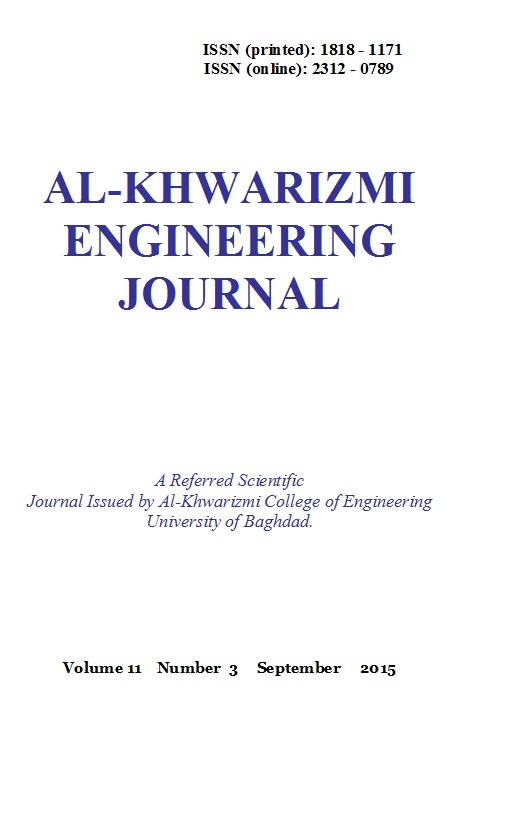Deflection Analysis of an Elastic Single Link Robotic Manipulator
Abstract
Abstract
Robotics manipulators with structural flexibility provide an attractive alternative to rigid robotics manipulators for many of the new and evolving applications in robotics. In certain applications their use is unavoidable. The increased complexity in modeling and control of such manipulators is offset by desirable performance enhancements in some respects. In this paperthe single- link flexible robotics manipulator was designed and implemented from Perspex and designed with 0.5 m length , 0.02 m width and with 0.004 m thickness with mass located at the tip. There are four subsystems; motion, control, accelerometer and gyro and a host computer subsystem. The work principle of single-link robotics manipulator is the base servomotor. It rotates a hub with the link on it and measure the tip deflection. the deflection was measured for three cases without load, with 27.5 and with 59.4 gram at the end of the flexible link . During each of the above cases I rotated the base servo motor at an angular velocity equals to 90 deg./s using control card based on ATMEGA640 microcontroller. the deflection was measured for the three cases and the deflection measured by MMA7631 Accelerometer and Gyro . This accelerometer controlled by using MEGA Arduino board . Then the dataI collected collected from accelerometer and plot it using MATLAB software and compared between theoretical results obtained from MATLAB program that based on Lagrange equation of motion and experimental results and we found the maximum deflection occurred when V=180 deg/sec and tip load=59.5 gram.
Keywords: Flexible Link Manipulator , Industrial robotics , Robotics Manipulator ,Beam Deflection.
Downloads
Downloads
Published
Issue
Section
License
Copyright: Open Access authors retain the copyrights of their papers, and all open access articles are distributed under the terms of the Creative Commons Attribution License, which permits unrestricted use, distribution, and reproduction in any medium, provided that the original work is properly cited. The use of general descriptive names, trade names, trademarks, and so forth in this publication, even if not specifically identified, does not imply that these names are not protected by the relevant laws and regulations. While the advice and information in this journal are believed to be true and accurate on the date of its going to press, neither the authors, the editors, nor the publisher can accept any legal responsibility for any errors or omissions that may be made. The publisher makes no warranty, express or implied, with respect to the material contained herein.












